Shrubs
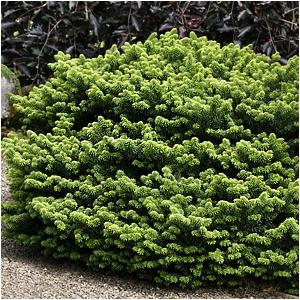
Dwarf Balsam Fir (Zone 3)
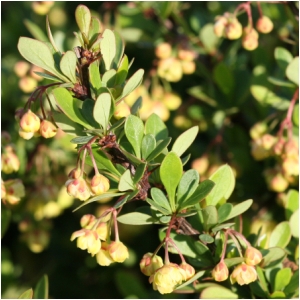
Kobold Barberry (Zone 4)
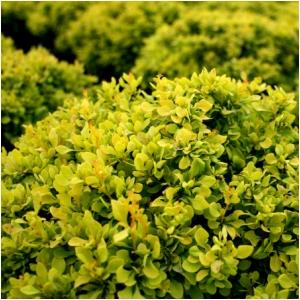
Tiny Gold Barberry (Zone 4)
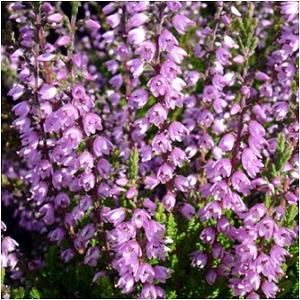
Spring Torch Scotch Heather (Zone 4)
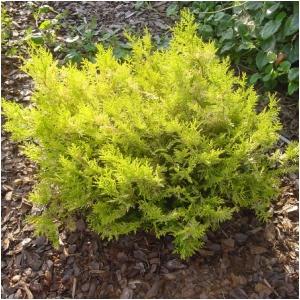
Ground covers
Just about any plant can be classified as a ground cover as long as it is perennial, evergreen, trailing or clumping and grows less thanone foot high. They are generally low maintenance and used for erosion control, to fill in spaces between plants, create a colourful carpet or even as a fire retardant.
Erosion control
When used for the prevention of ground erosion, trailing and clumping plants are generally used as their root systems are deep and spread quickly, covering the ground easily, growing over slopes and banks, holding the soil in place.
Fire prevention
Plants such as succulents that grow rapidly and have a high moisture or salt content are ideal fire retardants.
Creepers
When grass isn't appropriate or desired such as in between pavers or stepping stones or in instances where low maintenance is desired, creeping plants while not as durable as grass compliment and soften hardscapes. Plants such as Wolly Thyme and Chamomile soften stone edges and steps while tolerating low traffic.
Draping & Trailing ground covers
These plants grow flat along the ground, Creeping Jenny being a good example. It is particularly nice if they are permitted to drape over walls or planters. Due to their shallow root system these plants tolerate drought poorly.
Whatever their use, ground covers add interest and allow us to layer our landscapes , providing texture, warmth and depth.
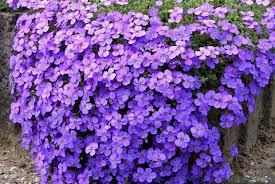
Aubrieta, Rock Cress
A low spreading hardy evergreen that inhabits rocks and banks, prefers full sun but will tolerate partial shade. Aubrieta blooms from May to June and tolerates a wide range of soil pH.
Bearberry Zone 2-6
As it's name would suggest is indeed a favourite food of bears. A broad leaf evergreen, this low growing dwarf shrub with stems rising 2-8" makes it's home in dry, sandy, low nutrient soils. Pale white to pink flowers bloom anywhere from March to June and produce shiny red edible berries. If deterring bears is a goal for your landscaping this would not be the wisest of choices. That said, if attracting wildlife is your desire this pretty ground cover welcomes many visitors.
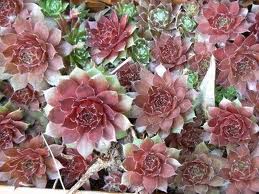
Hen's and Chicks
Hens & Chicks are popular in gardens for their varied and interesting appearance and hardiness. They are grown in rock gardens and containers. They do best in rocky soil, if allowed to stay wet they will lose their outer leaves to rot. Best grown in sun, they will however tolerate partial shade.

Lamium
A popular ground cover due to it's diversity of colour in both flower and leaf lamium are frost hardy and grow well in most soils. From containers to rock gardens this versatile plant can compliment any landscape. Due to it's prolific nature lamium should not be permitted to over take neighbouring plants with whom it shares it's bed. White & purple coloured species prefer full sun while the yellow variety prefer shade.

Lilly of the Valley
This favoured perennial has gained popularity for it's beautiful fragrance and ability to grow in shaded areas. Due to it's prolific nature, this simple plant is considered invasive by some. It is worthy to note that all parts of the plant (leaves, flowers, roots & berries) are poisonous. The shiny red berries are particularly attractive to children.

Periwinkle, Creeping Myrtle, Vinca Minor
Because of it's hardiness, ease of growth and few pests or diseases, this popular ground cover can be found in many gardens. Best grown in shade to partial shade periwinkle will spread rapidly and choke out most other weeds. Thought of as invasive by some this ground cover offers a beautiful blanket of waxy green leaves and pretty purple/blue flowers through spring and summer. Periwinkle will cover up a world of sins but must be kept in check so as to not overtake other gardens.

Baby's breath, Gypsophila
Produces tall, wide mounds of branching stems with clouds of tiny white to pink flowers. This perennial prefers dry, sandy, well drained alkaline soil and full sun. Commonly found in floral arrangements baby's breath provides a lovely back drop to more structured flowers.